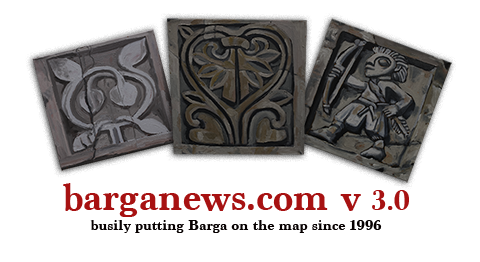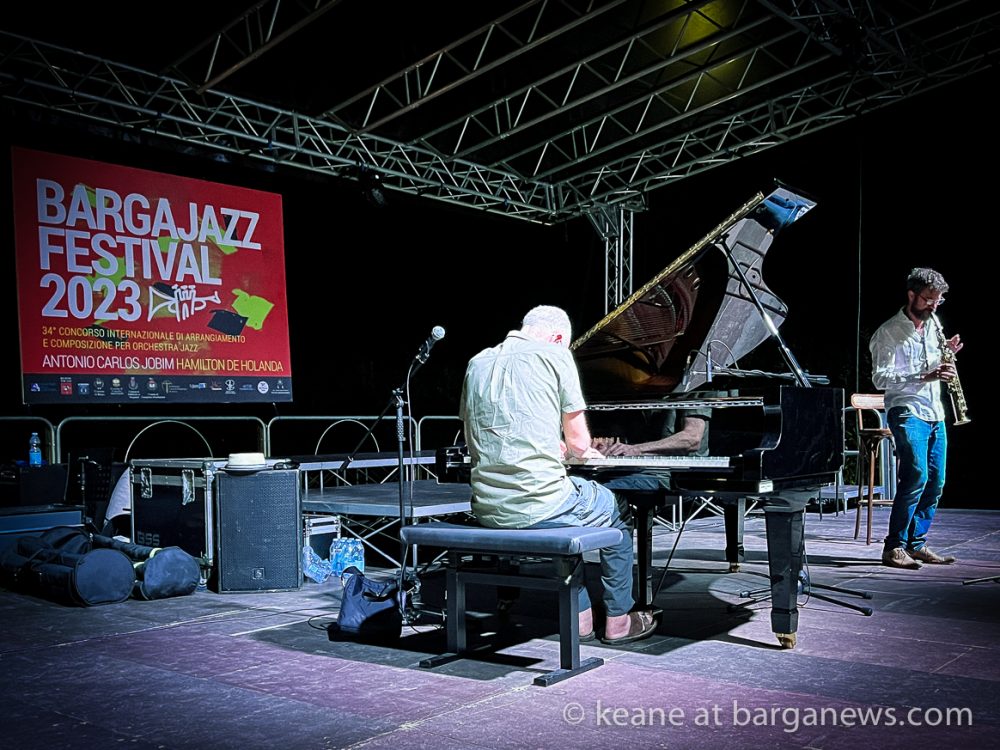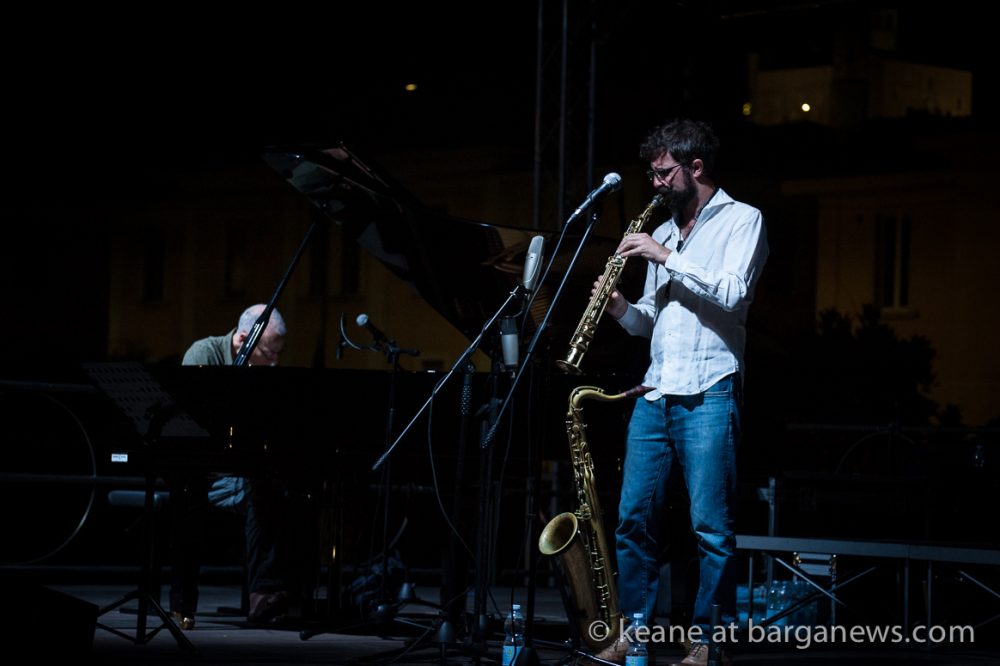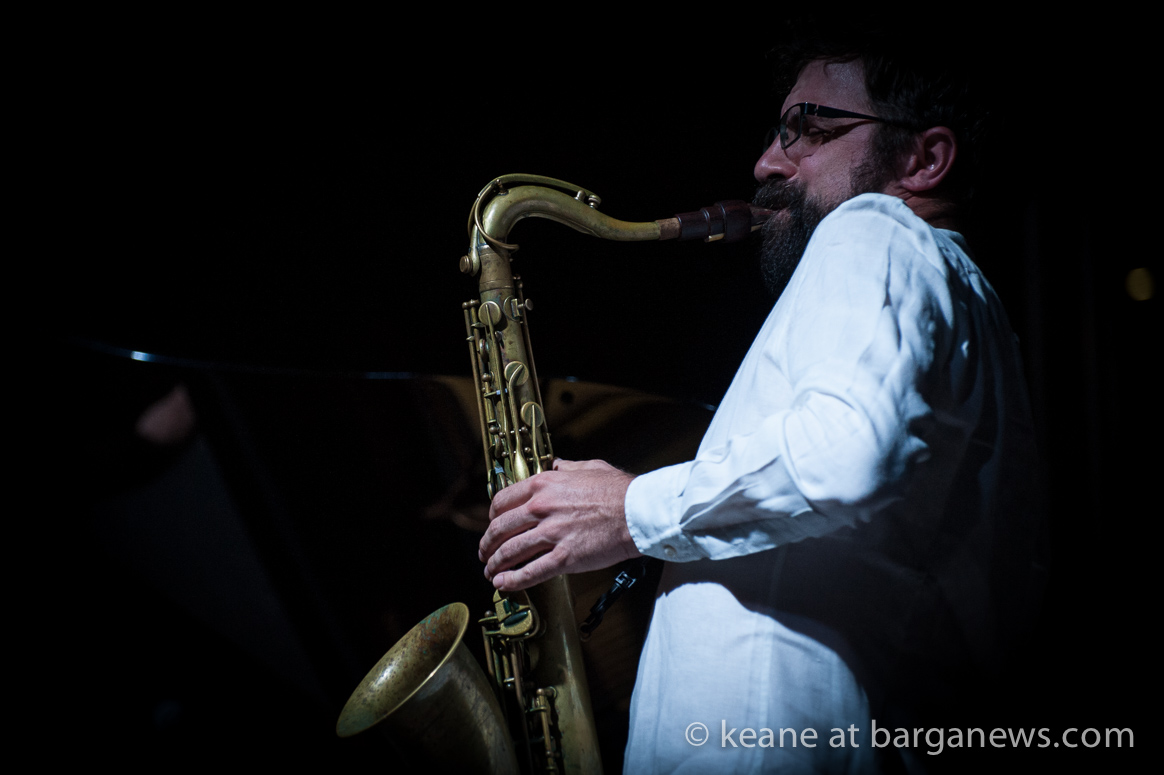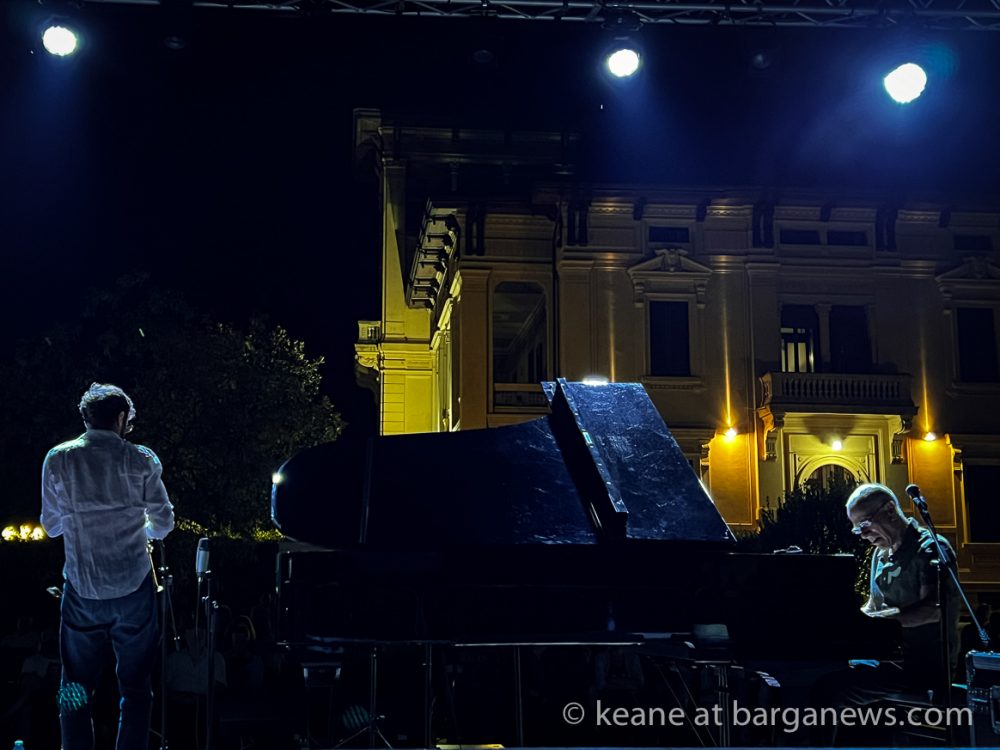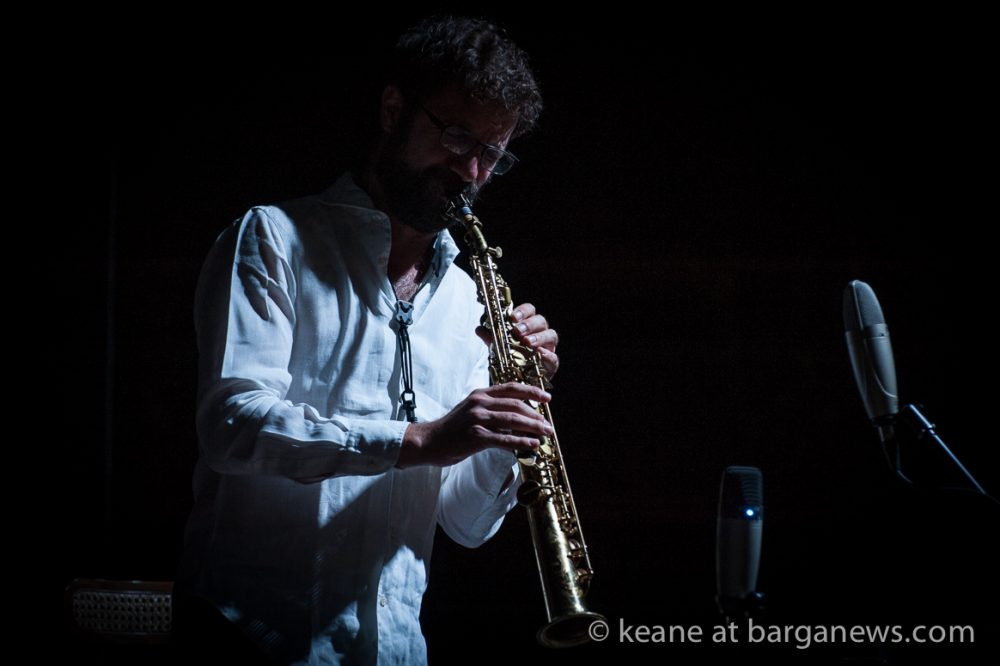Marc Copland – pianoforte | Robin Verheyen – sax tenore
Il pianista statunitense Marc Copland incontra il sassofonista belga Robin Verheyen.
Copland è entrato a far parte della scena jazz all’inizio degli anni ’60 come sassofonista, ma all’inizio degli anni Settanta la sua ricerca armonica lo ha portato a dedicarsi al pianoforte per sviluppare uno stile originale, spesso definito come armonia astratta, con utilizzo di elementi della musica atonale.
Nella sua lunga carriera ha collaborato con i grandi del jazz mondiale John Abercrombie, Glen Moore, Chico Hamilton, Bob Belden, Jane Ira Bloom, Joe Lovano, Herbie Mann, James Moody, John Scofield, Jim Snidero, Peter Erskine.
Molti gli album in piano solo in cui ha sviluppato la sua ricerca poetica mentre il trio con Kenny Wheeler alla tromba e John Abercrombie alla chitarra, che ha visto l’incontro di tre grandi innovatori, rimane una delle pagine più interessanti del jazz contemporaneo.
Marc Copland
Copland è entrato a far parte della scena jazz a Philadelphia nei primi anni ’60 come sassofonista, per poi trasferirsi a New York City, dove ha sperimentato con il sassofono contralto elettrico. Nei primi anni ’70, mentre perseguiva il proprio concetto armonico, si è mostrato insoddisfatto di ciò che sentiva fossero limitazioni innate nel sassofono e si è trasferito nell’area di Baltimora-Washington, D.C., dove è rimasto per un decennio per riciclarsi come pianista jazz. È tornato a New York a metà degli anni ’80. Da allora è diventato noto per il suo uso altamente sviluppato e colorato dell’armonia astratta, spesso utilizzando accordi policordi insoliti e elementi dalla musica atonale. Mel Minter scrive che Copland “eccelle nel dipingere atmosfere sonore astratte”.
Soprannominato “il sussurratore del pianoforte” da Jazz Podium (Germania) e Jazz ‘N More (Svizzera), è ben noto per il suo tocco unico e la sua sensibilità. Possiede la straordinaria capacità di portare il suo pubblico in un mondo intimo di suono, colore, silenzio e emozione, lasciando l’ascoltatore sospeso ad ogni nota.
“Perché la musica possa davvero compiere la sua funzione come forma d’arte, deve andare oltre le note, proprio come la pittura deve andare oltre i colori”, afferma il pianista/compositore. “Queste cose sono tutti strumenti che consentono alla forma d’arte in questione di emozionare l’ascoltatore e creare un’esperienza che risuona profondamente, sia musicalmente che extra-musicalmente. Tutti questi strumenti sono importanti, ma ad un certo punto si tratta di cosa sta dicendo questa arte a un altro livello. I musicisti che la maggior parte degli ascoltatori riconoscerebbero come artisti del genere – John Coltrane, Miles Davis, Bill Evans, Herbie Hancock – avevano tutti questo. E in certi momenti delle loro carriere, tutto si coagula ed è molto chiaro che stanno inviando un messaggio molto forte, sia con gli strumenti innovativi che la loro musica utilizza, sia con ciò che stanno cercando di comunicare oltre le note.”
Robin Verheyen
Robin Verheyen ha iniziato a prendere lezioni di sax all’età di 12 anni. Ha vinto il prestigioso premio Django d’Or all’età di 25 anni. Ha chiamato casa diverse città (Turnhout, Amsterdam, Parigi, New York). Si può certamente dire che Robin Verheyen ha un approccio concentrato alla sua carriera.
Nato a Turnhout nel 1983, Robin Verheyen ha studiato per tre anni in Belgio, poi due anni nei Paesi Bassi, e un anno come studente d’onore (“dean’s list”) alla Manhattan School of Music con Dave Liebman, Steve Slagle, Frank Vaganée, Jasper Blom, Ferdinand Povel, Dick Oatts e John Ruocco. Ha concluso i suoi studi musicali con onore ad Amsterdam.
Nel 2005 Verheyen si è trasferito a Parigi per un anno dove ha suonato in band guidate da Giovanni Falzone, Remi Vignolo, Nelson Veras e Bruno Angelini. A Parigi ha conosciuto il pianista finlandese Aki Rissanen con cui lavora da allora nel loro duo e nel trio con il batterista Markku Ounaskari. Hanno registrato insieme un album chiamato “Semplice” uscito nel 2009 per Alba Records. Nel 2013 hanno pubblicato l’album del trio “Aleatoric” su Eclipse Music.
Nel maggio 2009 la rivista francese Jazzmagazine lo ha dichiarato uno dei primi 12 sassofonisti europei tra nomi importanti come Pietro Tonolo, Christoph Lauer e Trygve Seim.
Verheyen ha suonato come sideman con artisti premiati con il Grammy Award come Roy Hargrove, Maria Schneider, Branford Marsalis, NEA Jazz Master Toots Thielemans e molti altri come Charnett Moffett, Tom Rainey, Ravi Coltrane, Gerald Cleaver, Tyshawn Sorey e Will Calhoun.
 |
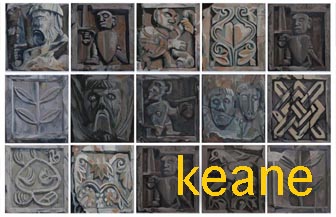 |
 |
 |
Marc Copland
Copland became part of the jazz scene in Philadelphia in the early 1960s as a saxophonist, and later moved to New York City, where he experimented with electric alto saxophone. In the early 1970s, while pursuing his own harmonic concept, he grew dissatisfied with what he felt were inherent limitations in the saxophone and moved to the Baltimore-Washington, D.C., area, where he remained for a decade to retrain as a jazz pianist. He returned to New York in the mid-1980s. He has since become noted for his highly developed, colorful use of abstract harmony, often using unusual polychords and elements from atonal music. Mel Minter writes that Copland “excels at painting abstract sonic atmospheres.
Dubbed “the piano whisperer” by Jazz Podium (Germany) and Jazz ‘N More (Switzerland), he is well known for his unique touch and sensitivity. He possesses the uncanny ability to bring his audience into an intimate world of sound, color, silence and heart, leaving the listener hanging on each note.
“For music to really fulfil its function as an art form, it has to get beyond the notes, just as painting has to get beyond the colours,” the pianist /composer maintains. “These things are all tools that enable the art form in question to move the listener and make an experience that’s deep- ly resonating, both in musical and extra-musical ways. All those tools are important, but at a certain point it’s about what is this art saying at another level. The musicians whom most listeners would recognize as art- ists like that—John Coltrane, Miles Davis, Bill Evans, Herbie Hancock— they all had that. And at certain points in their careers, it all coalesces and it’s very clear that they’re sending a very strong message, both with the innovative tools that their music uses and with what they’re trying to say beyond the notes.”
Robin Verheyen
Robin Verheyen first started lessons on the saxophone at the age of 12. He won the prestigious Django d’Or prize at the age of 25. He has called a variety of cities his home (Turnhout, Amsterdam, Paris, New York). One can definitely say that Robin Verheyen has a focused approach to his career.
Born in Turnhout in 1983, Robin Verheyen first studied for three years in Belgium, then two years in the Netherlands, and one year as an honour student (“dean’s list”) at the Manhattan School of Music with Dave Liebman, Steve Slagle, Frank Vaganée, Jasper Blom, Ferdinand Povel, Dick Oatts, and John Ruocco. He ended his musical study with honours in Amsterdam.
In 2005 Verheyen moved to Paris for a year where he played in bands led by Giovanni Falzone, Remi Vignolo, Nelson Veras, and Bruno Angelini. In Paris he met the Finnish pianist Aki Rissanen with whom he’s been working since in their duo and trio with drummer Markku Ounaskari. They recorded a cd together called “Semplice” that was released in 2009 on Alba Records. In 2013 they released the trio album “Aleatoric” on Eclipse Music.
In May 2009 the French Jazzmagazine declared him one of the top 12 European saxophone players among big names like Pietro Tonolo, Christoph Lauer and Trygve Seim.
Verheyen has played as a sideman with Grammy Award winning artists Roy Hargrove, Maria Schneider, Branford Marsalis, NEA Jazz Master Toots Thielemans and many others like Charnett Moffett, Tom Rainey, Ravi Coltrane, Gerald Cleaver, Tyshawn Sorey, and Will Calhoun.
Verheyen has also been very active as an educator. He has taught master classes at numerous conservatories around the world such as the conservatory of Amsterdam, Lawrence University, The University of Wisconsin, LUCA Jazz School of the Arts and many more, as well as private lessons.
